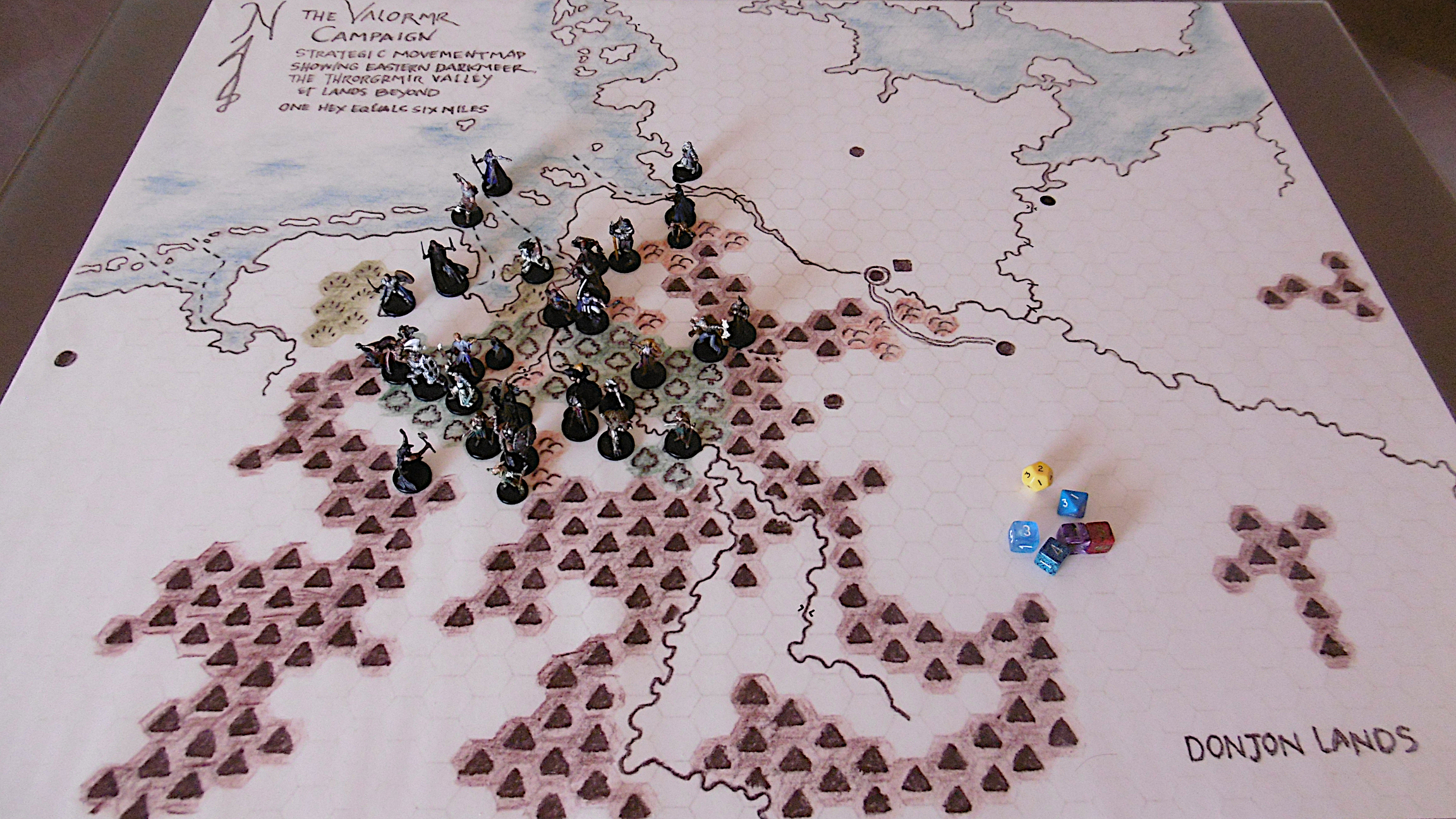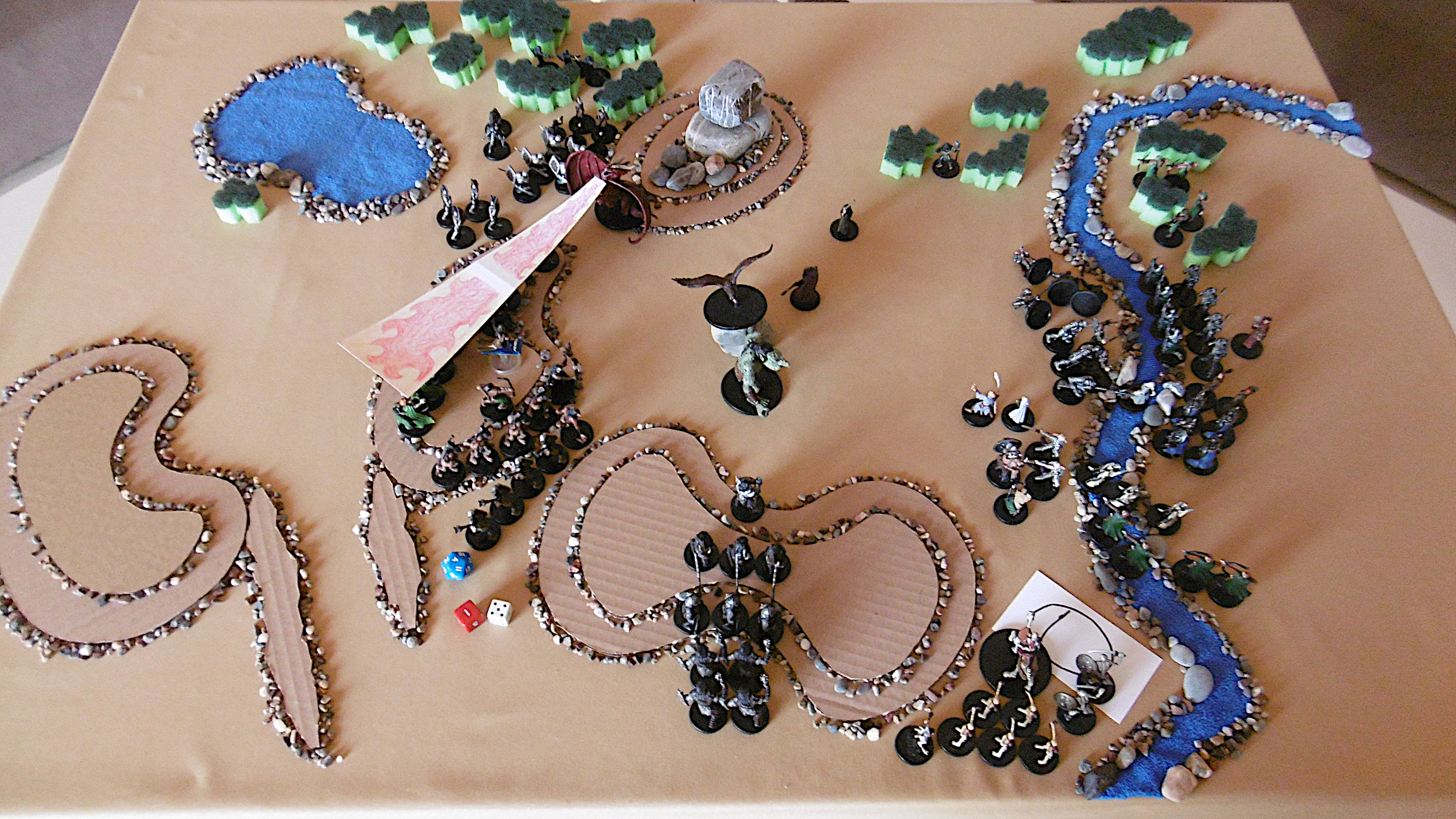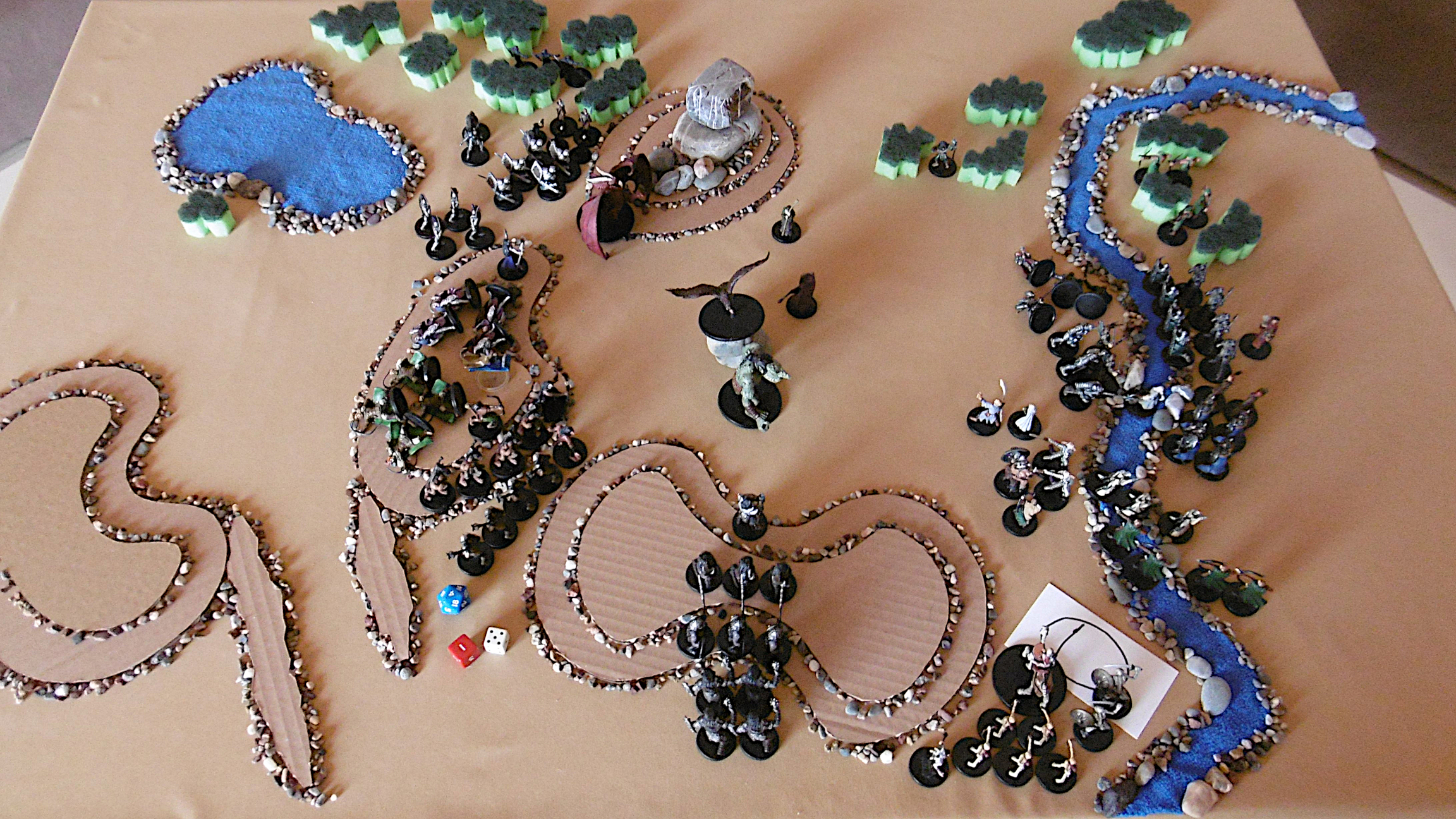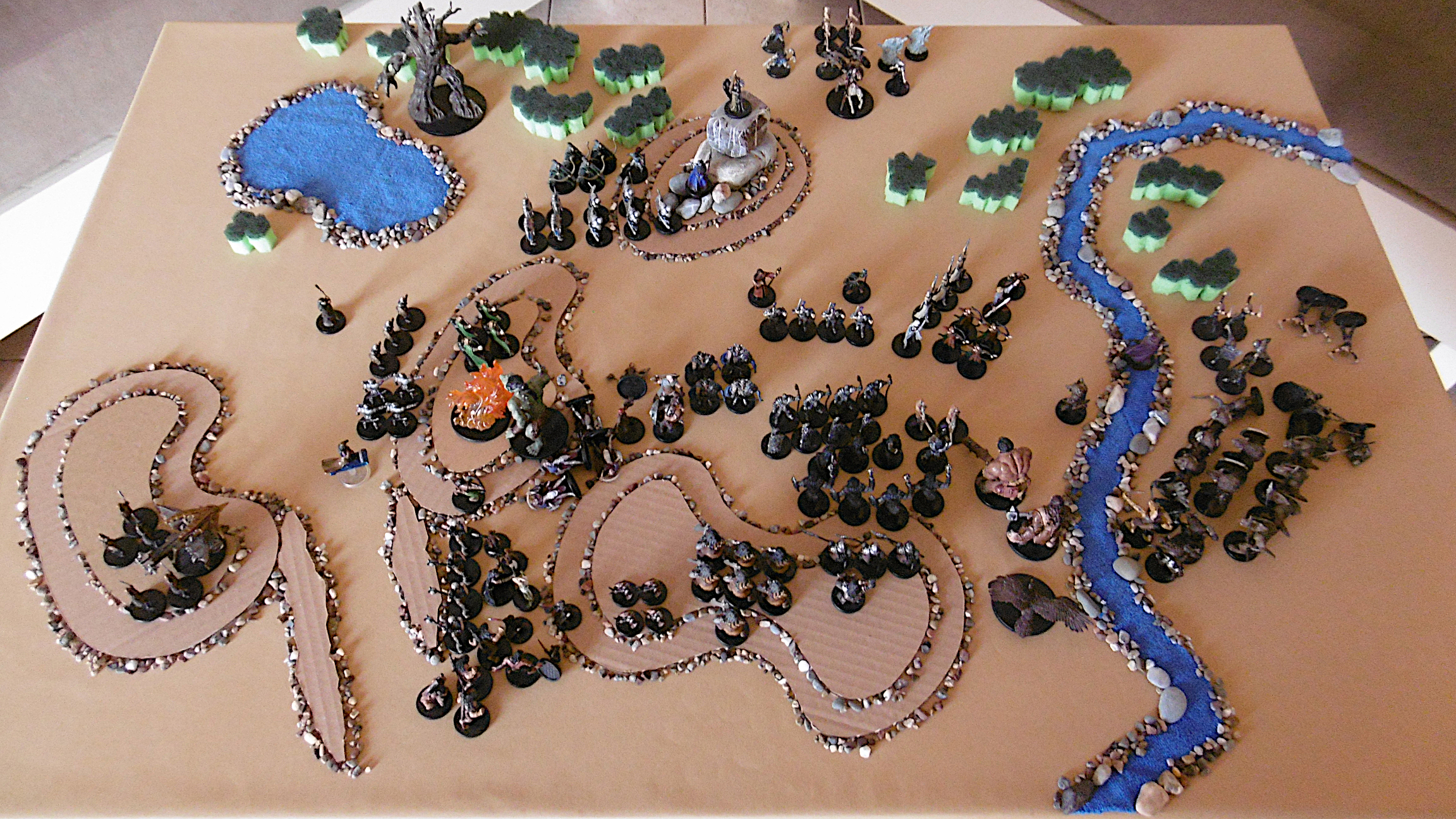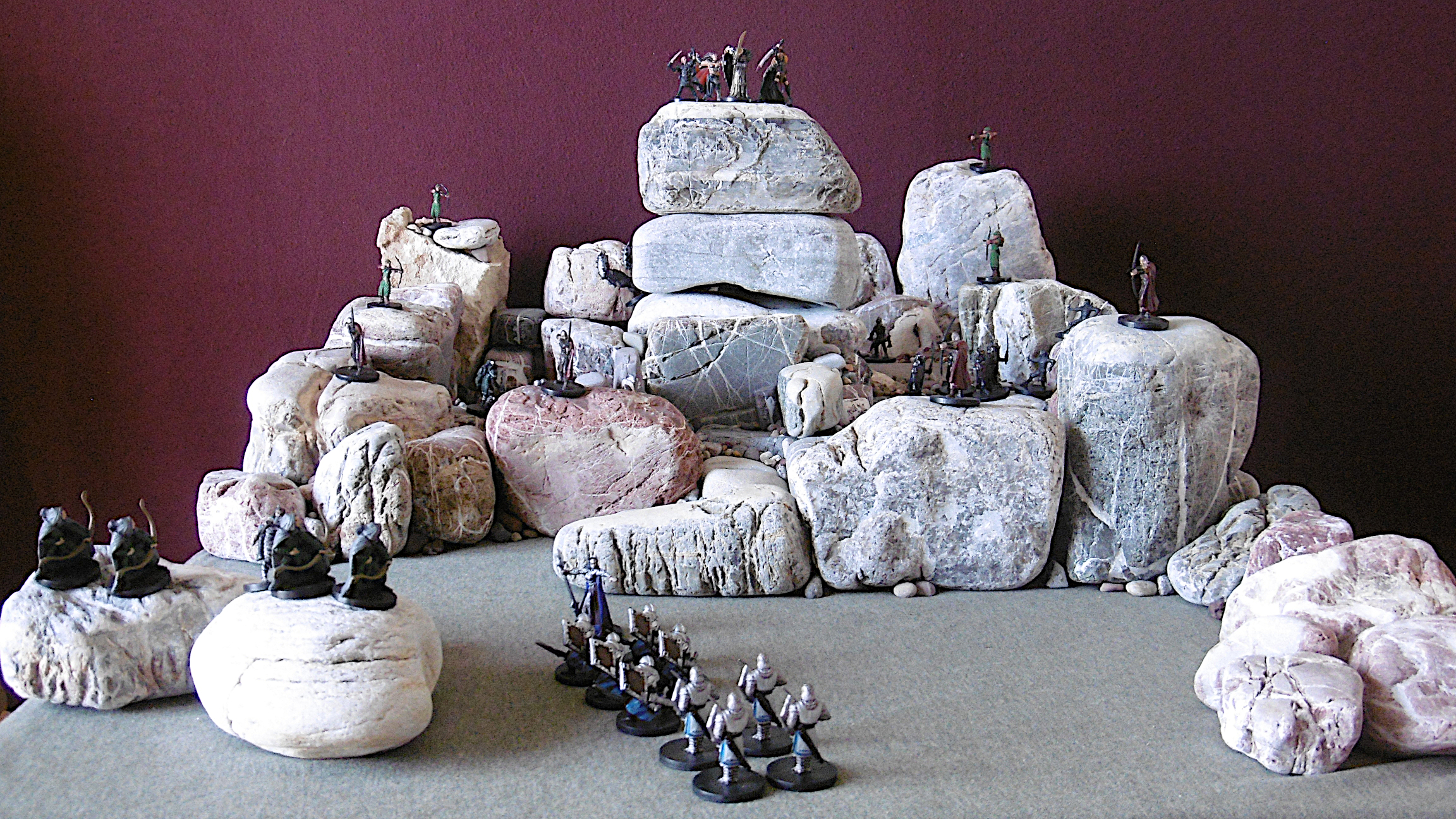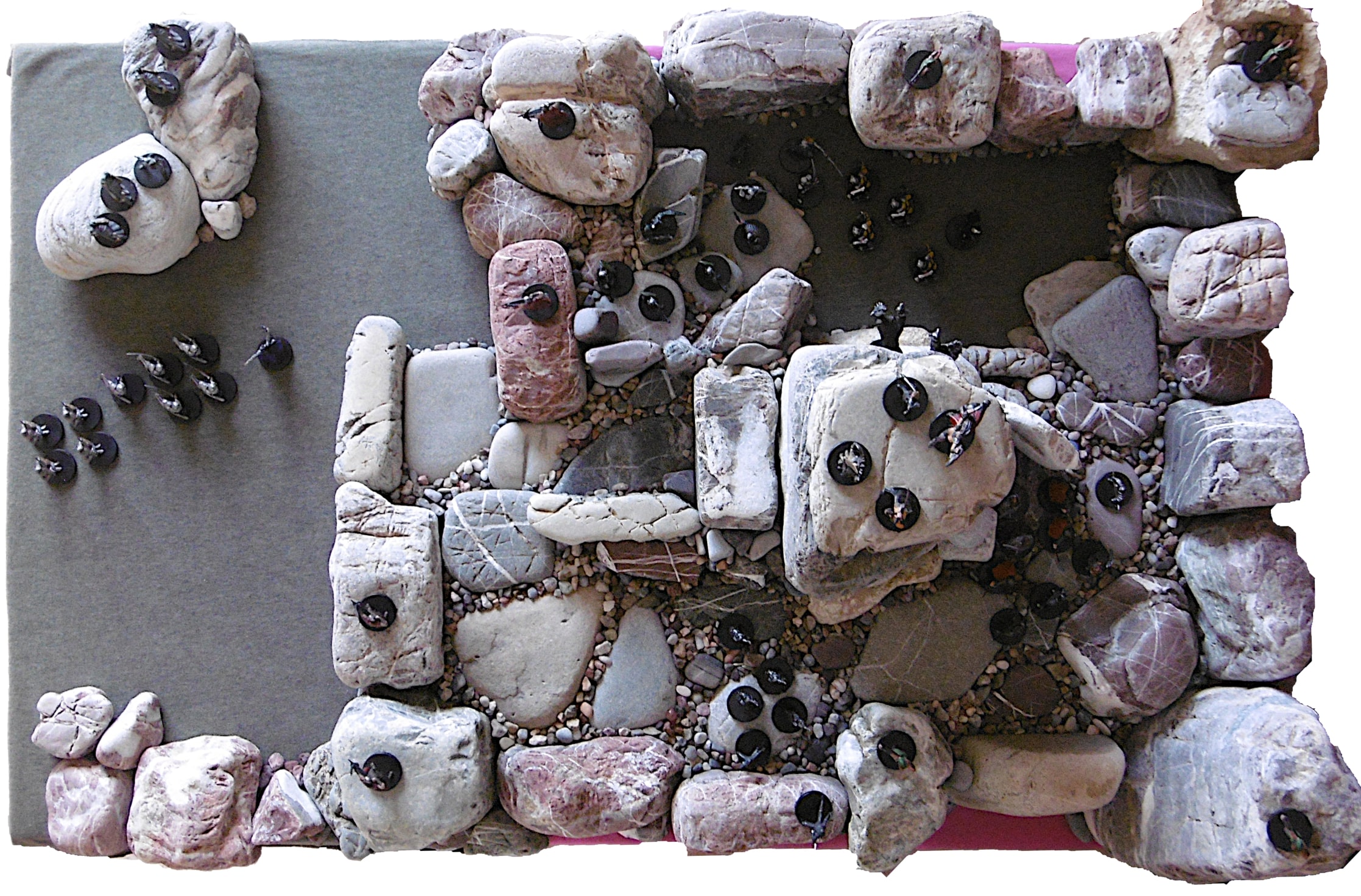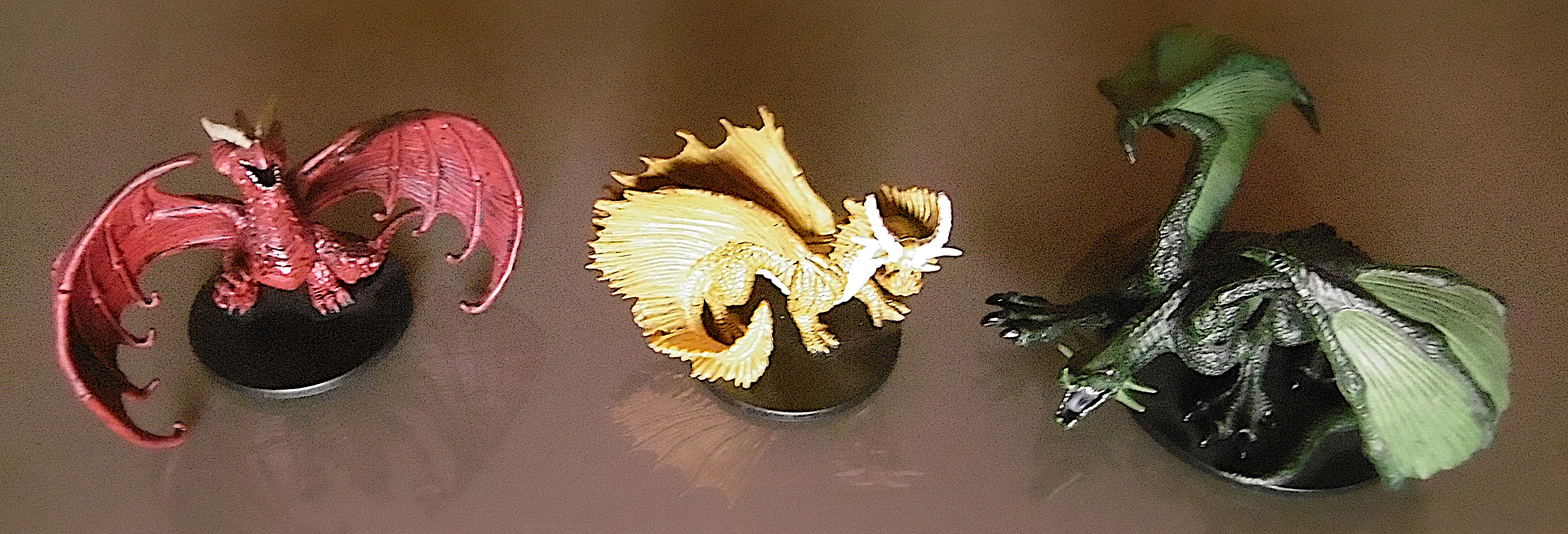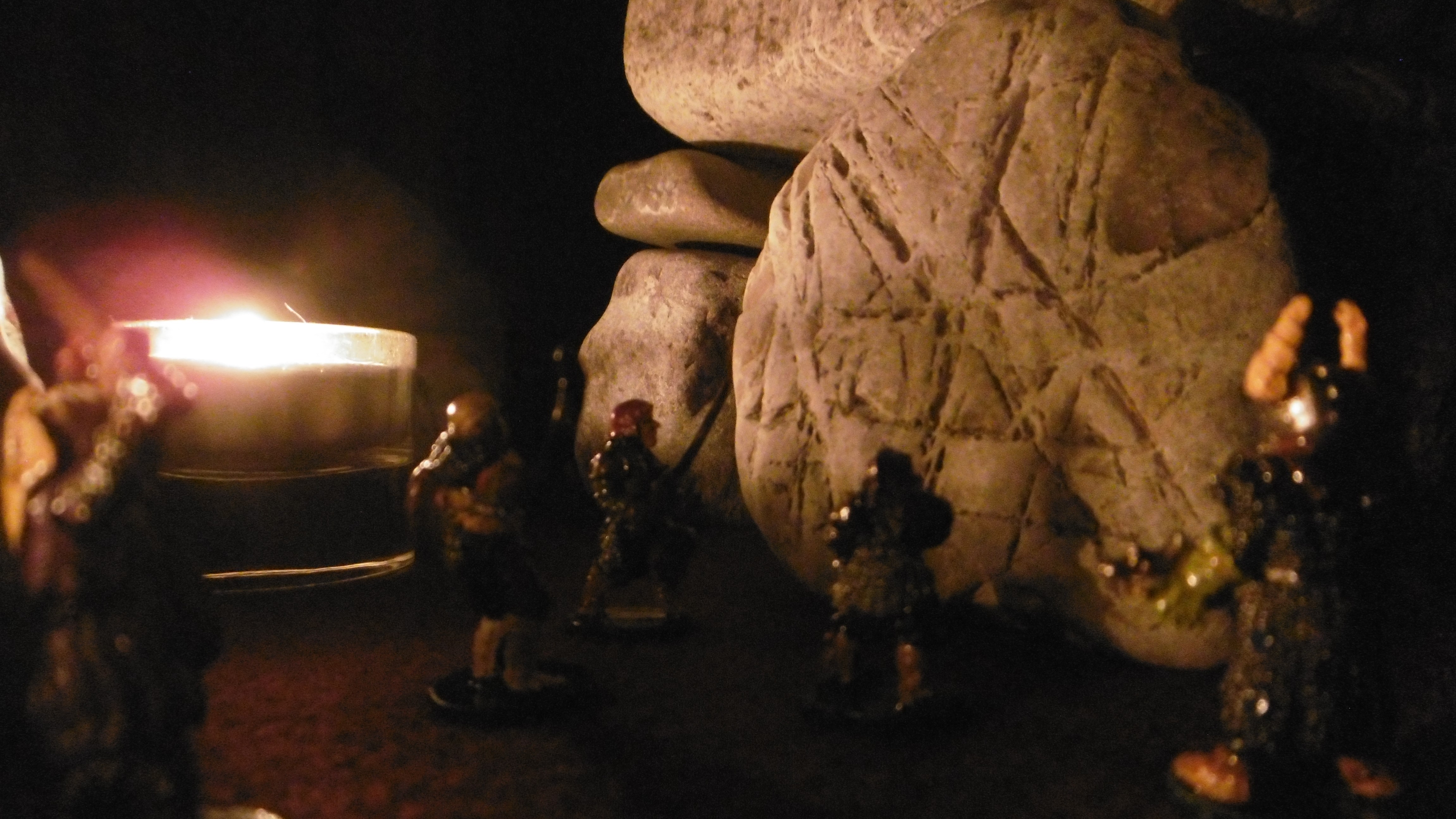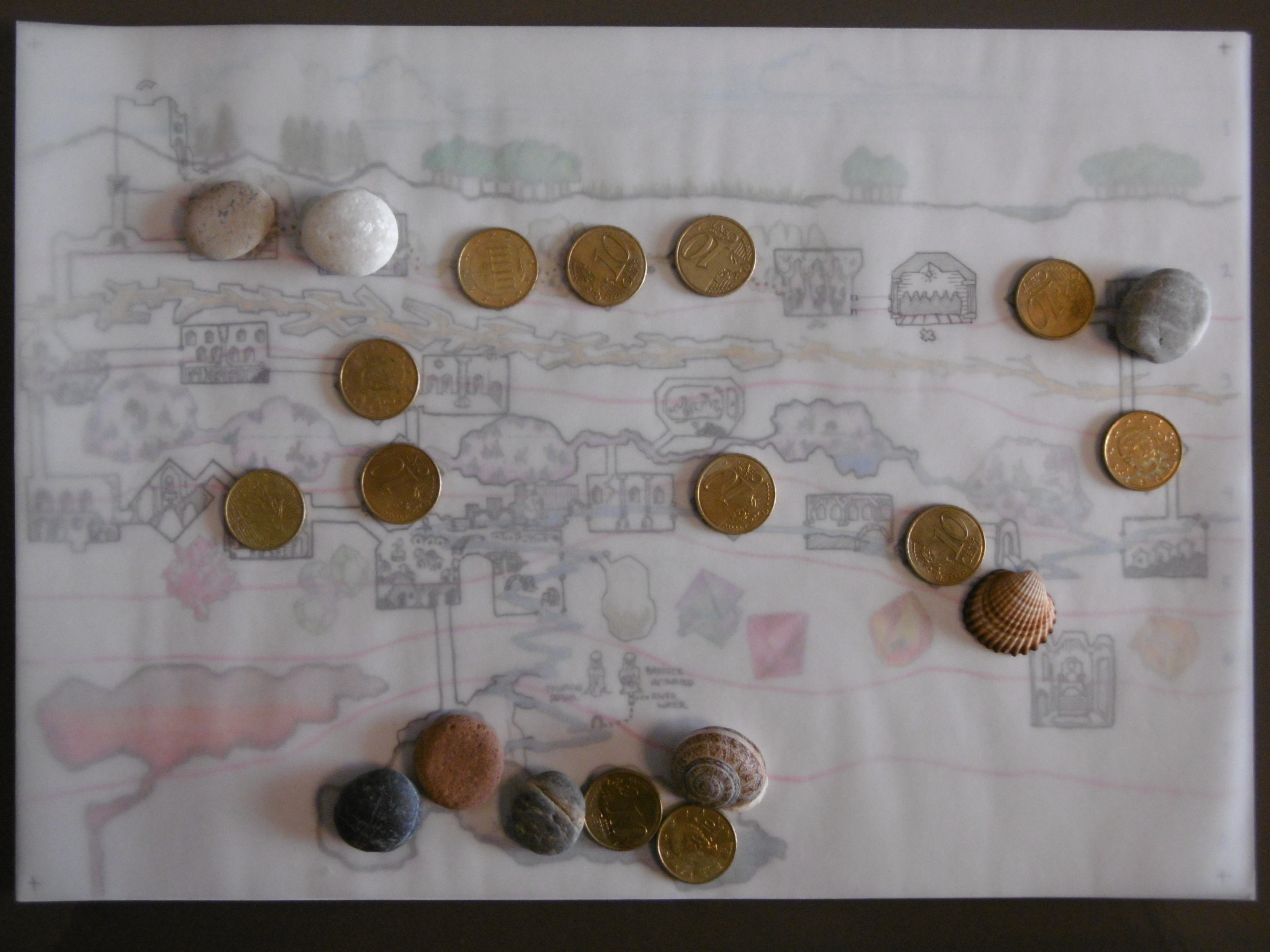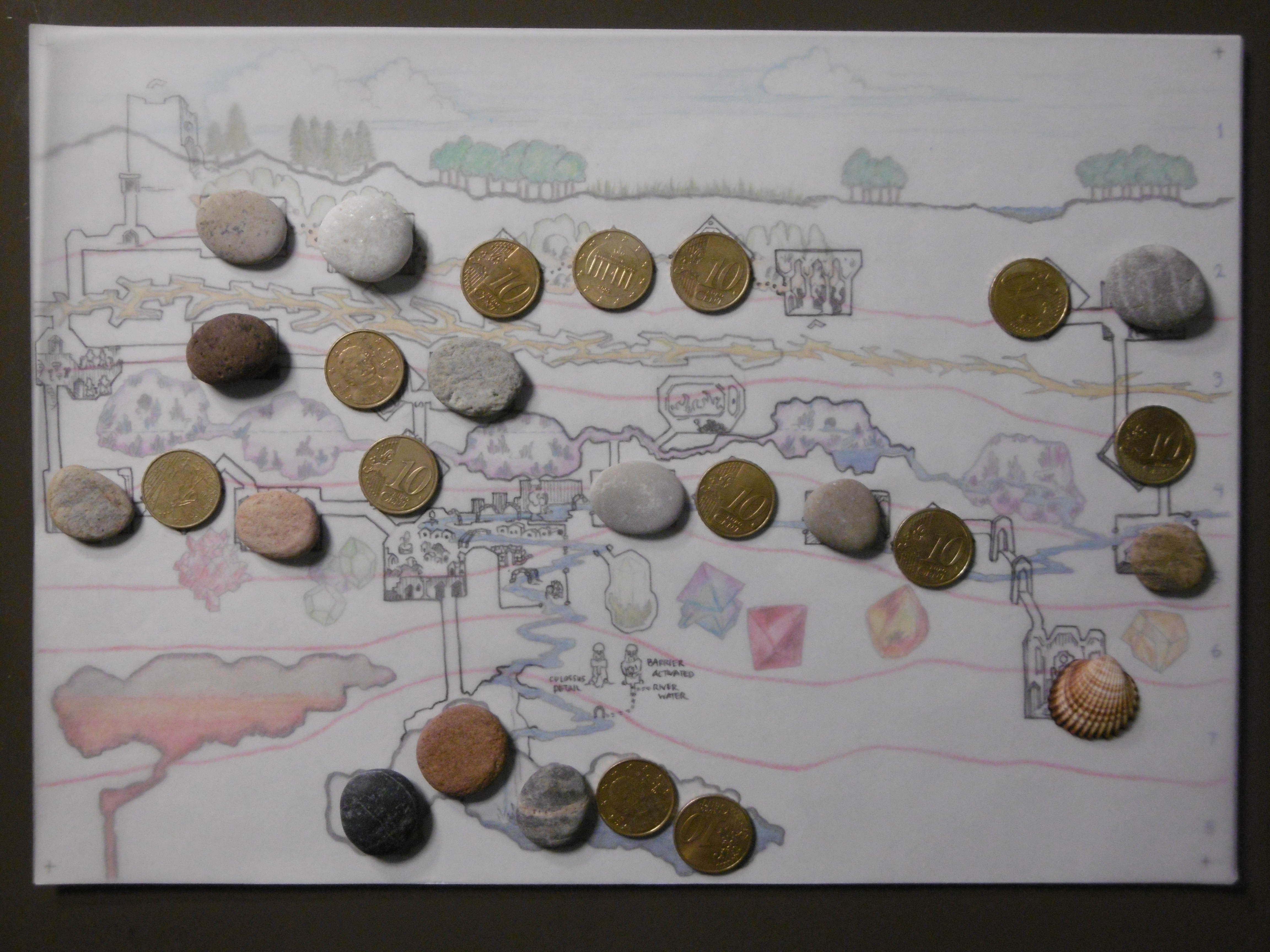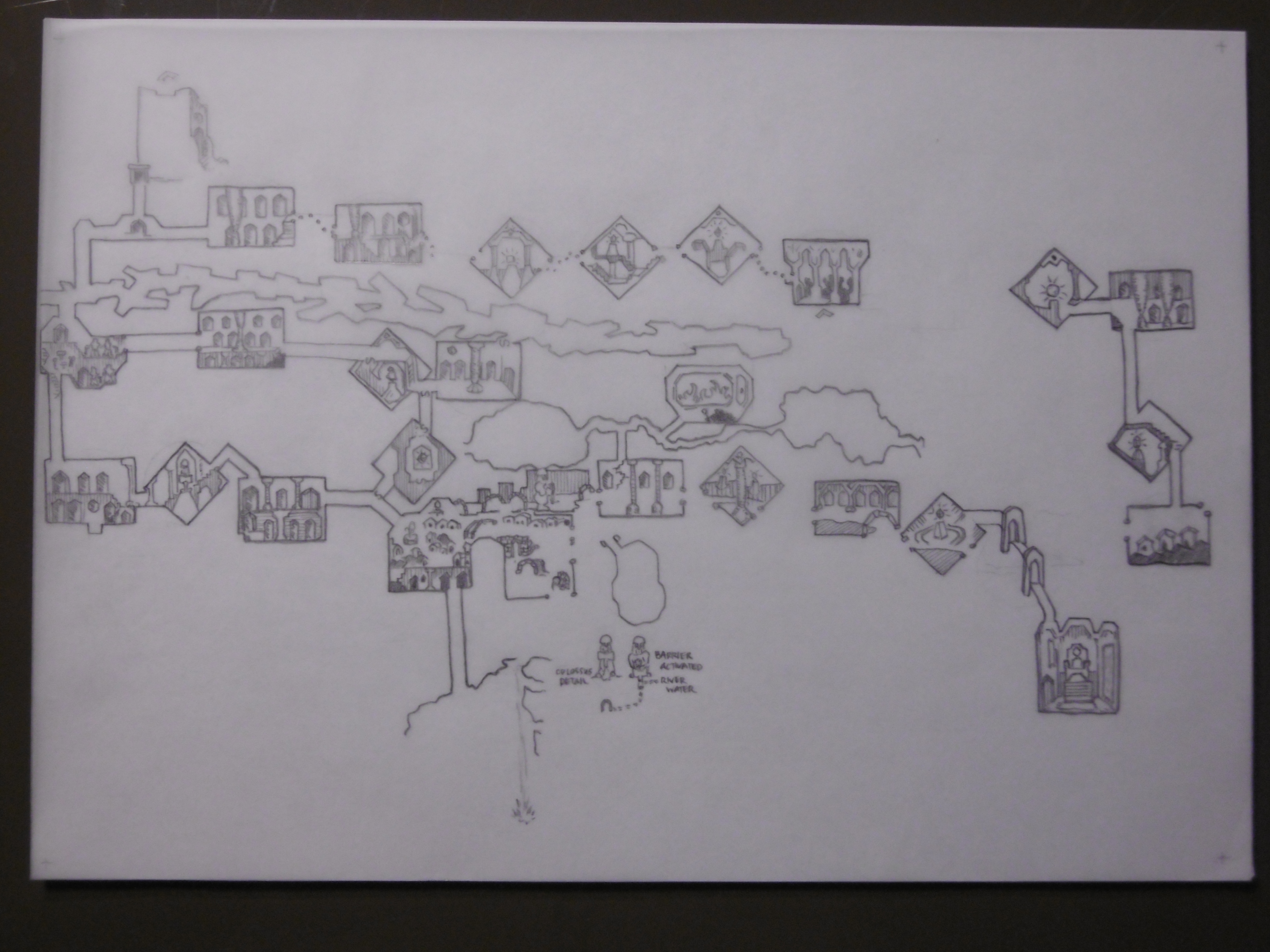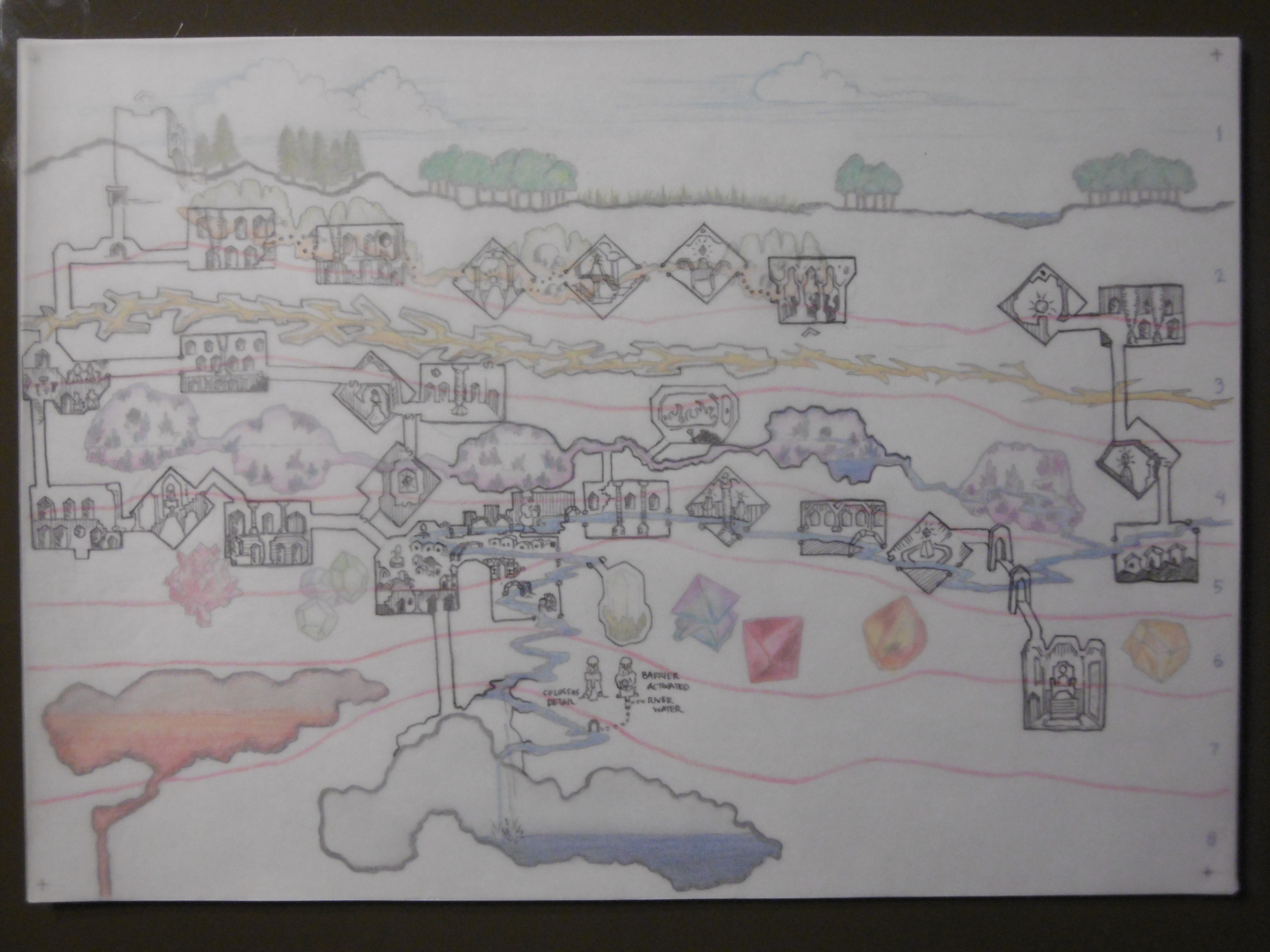Schlafender Drachenturm, the Lonely Tower
Spurned by her lover, the wizard Agodt built the tower that now crouches below the crest of a high crag in the remote foothills of the Western Mountains. Other than the occasional apprentice, she lived alone.
Agodt named her home Schlafender Drachenturm—or Sleeping Dragon Tower—after the motif with which she adorned the structure. But even in the wizard’s day, folks called it “the Lonely Tower,” for Agodt pined after her lost love. Since her disappearance some decades ago, the tower has been undisturbed. Only time takes its toll on crumbling stones.
Before the summertime distraction that was the Valormr Campaign, I played the first session of Wyrmwyrd. Wyrm Dawn, the Battle of Throrgardr, and Valormr were invaluable in fleshing out the dungeon’s history and culture as well as the geography of surrounding lands. Though short campaigns, the three together took up the better part of the game-playing year.
The autumn passed in house-moving, “there and back again” to the beach-front apartment, where I’ll be through April at least. A nomad’s is a precarious lifestyle. I intend to get in at least one more session of Wyrmwyrd before the end of B/X’s 40th-anniversary year. In any case, the campaign continues.
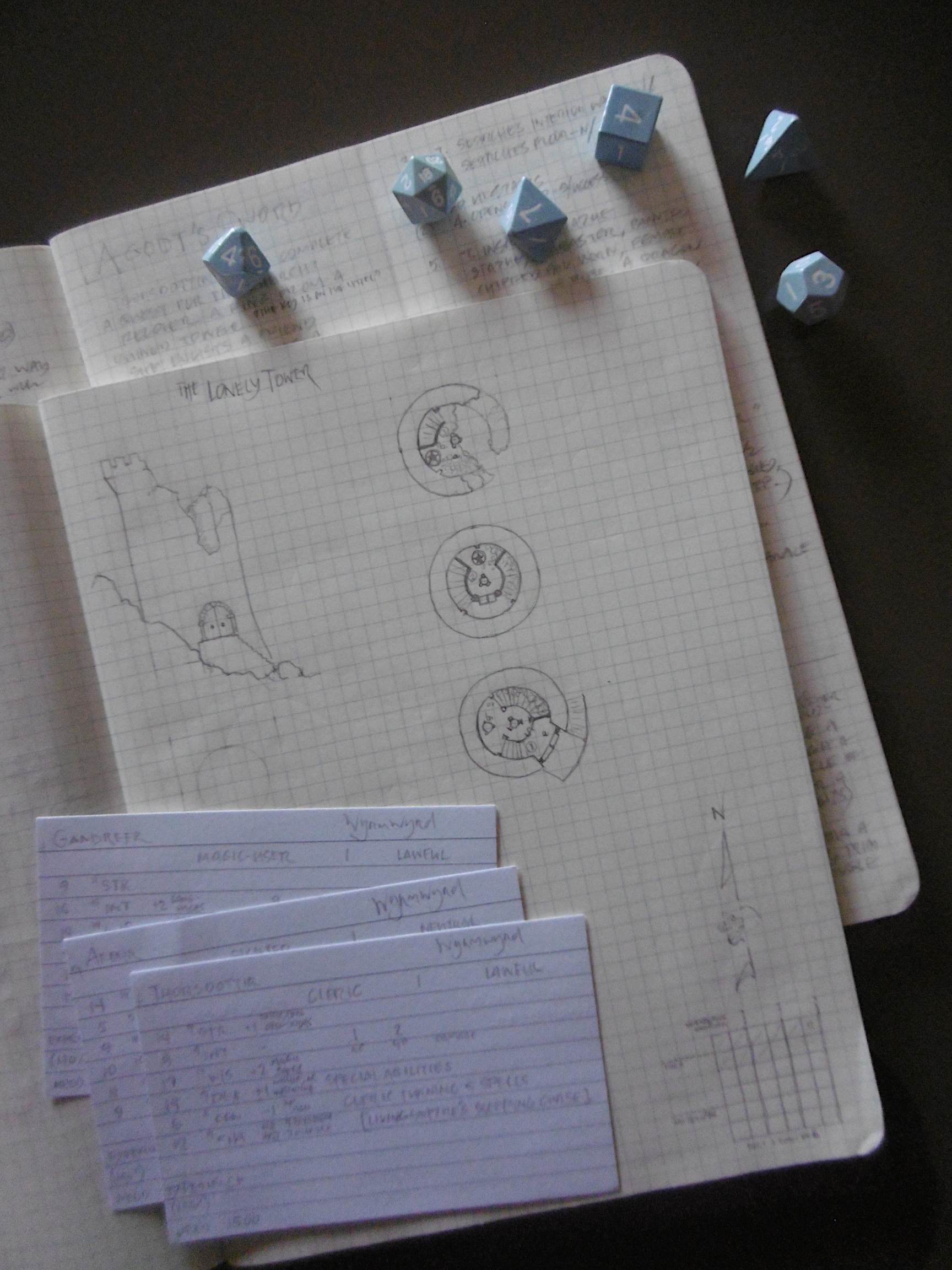
Player Characters
Thorsdottir serves as an acolyte of the Allfather Church in the Elding Wood village. Her friend Gandrefr is apprenticed to a sorcerer, who lives in a nearby hamlet.
Now, an adventurer has come to the Elding Wood village. Ansgar the Bold speaks of a powerful magic sword once possessed by the wizard of the Lonely Tower. Proof of the claim is a parchment he found among the belongings of Arkadin Hoarcloak, Agodt’s last apprentice, long-dead. Ansgar shows this parchment to anyone who expresses interest in joining his adventuring party. The calf skin is yellow with age, its edges burnt.
“I saw it only once,” reads the crooked scrawl, “before she was aware of my presence. The sword lay on the worktable before her. It was magnificent: a serpent coiled around the hilt, from bejeweled pommel to crossguard, and runes ran the length of the bronze blade. When Agodt noticed me, she covered the sword and bid me away.
“Later, in the dungeon below the tower, she built a secret vault. Among many wondrous treasures she stored there was a yew-wood case, narrow and long, bound in brass, a serpent engraved on the lid.
“Agodt closed the vault behind a solid stone-block wall. I dared to ask: How do you get in? She answered: The key is on the lintel. I searched the entire tower from upper works to dungeons below. I found no kind of key nor anything else on any lintel.
“It was soon after this that I was dismissed. Agodt gave no reason, and she never took another apprentice.”
Arkadin Hoarcloak
Eversden Hamlet, Odenwoad
From the village and surrounding communities, a score of hopeful adventurers gathered at the Elf King’s Inn. The company discussed plans for the expedition. Ansgar hired a local guide to escort the party to the Lonely Tower. They would depart at dawn on the morrow.
Short festivities followed. The ambiance was jovial. Afterward, Ansgar retired to his room. When he didn’t come down in the morning, two of the company banged on the door before entering. They found Ansgar in a blood-soaked bed, his throat slit. The parchment was not found.
With the company now divided between those who would venture to the Lonely Tower as planned, those who doubted the parchment’s veracity, and those who would find the killer, the inn erupted in boisterous debate. Amid the cacophony, Gandrefr approached a quiet fellow who stood apart from the crowd, while Thorsdottir sought the guide. After brief negotiations, the four departed.
The guide escorted the party to the Lonely Tower then waited outside as agreed. Thorsdottir, Gandrefr, and the retainer Ardur explored the tower’s three upper levels. They discovered, above the entry door and on each floor, something of interest.
Entrance
Engraved in the arch over the entry door is the following inscription:
LOST ALONE TOGETHER FOUND
First Floor
A fresco covers the west wall, between the two stair bases, from floor to 20-foot ceiling. It depicts two robed figures, man and woman, he in blue, she in lavender. He carries a short blade. She holds a ball of light overhead. They walk through a wood. Ahead of them, a circle of stones. On the stones are carved eight-legged serpentine creatures. Above the circle’s center floats an object wreathed in a radiant aura.
Second Floor
A statue of a human female and a dragon coiled around. The paint is chipped and worn, showing alabaster beneath. The woman’s face is triangular, the nose thin. She wears a lavender robe, trimmed with white flowers. The dragon’s tail circles her waist, leaving arms free, and turns up at her knees. It’s head rests on a shoulder, peering up at her.
Third Floor
An iron statue, covered in a layer of rust, of a dragon standing, wings displayed, tail wrapped around the base. One eye is closed. The other is open, but the socket is empty. A claw held to its chest is clenched tight in a fist.
